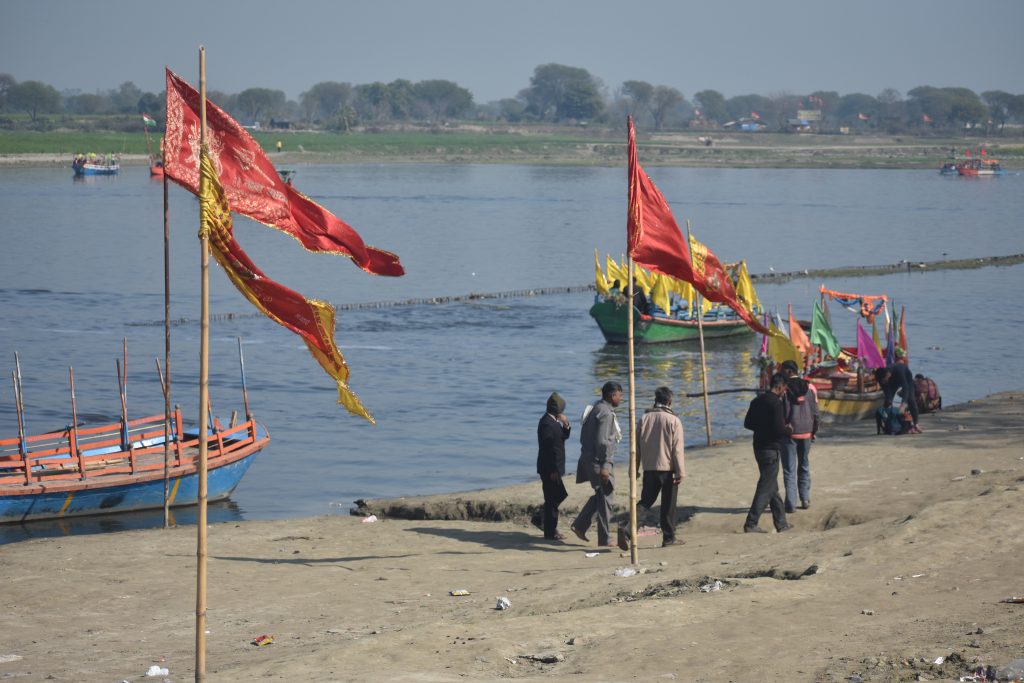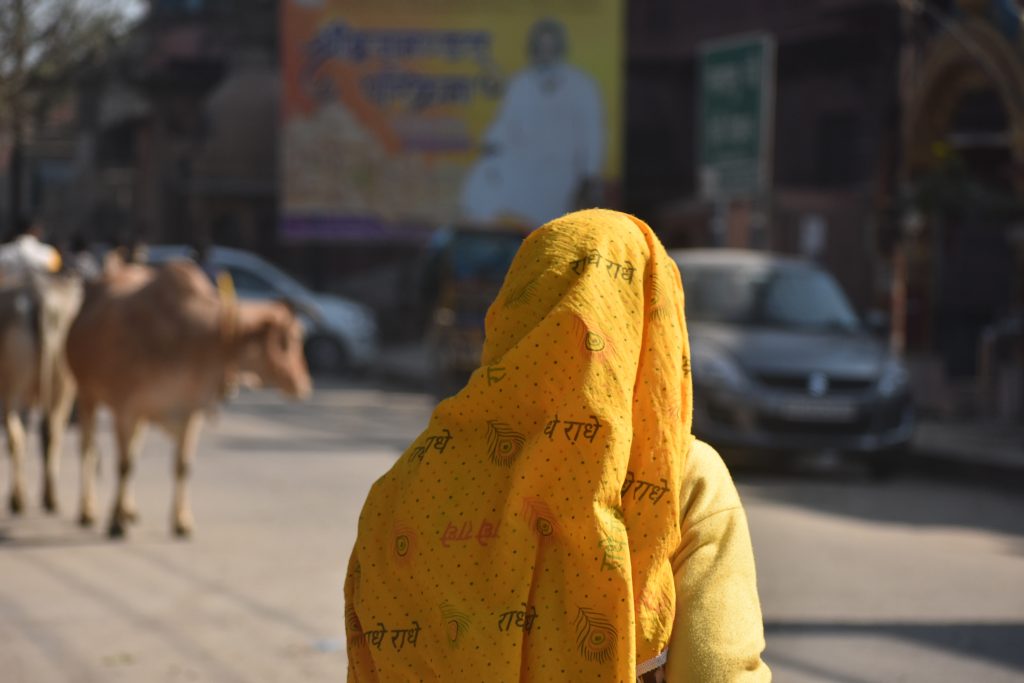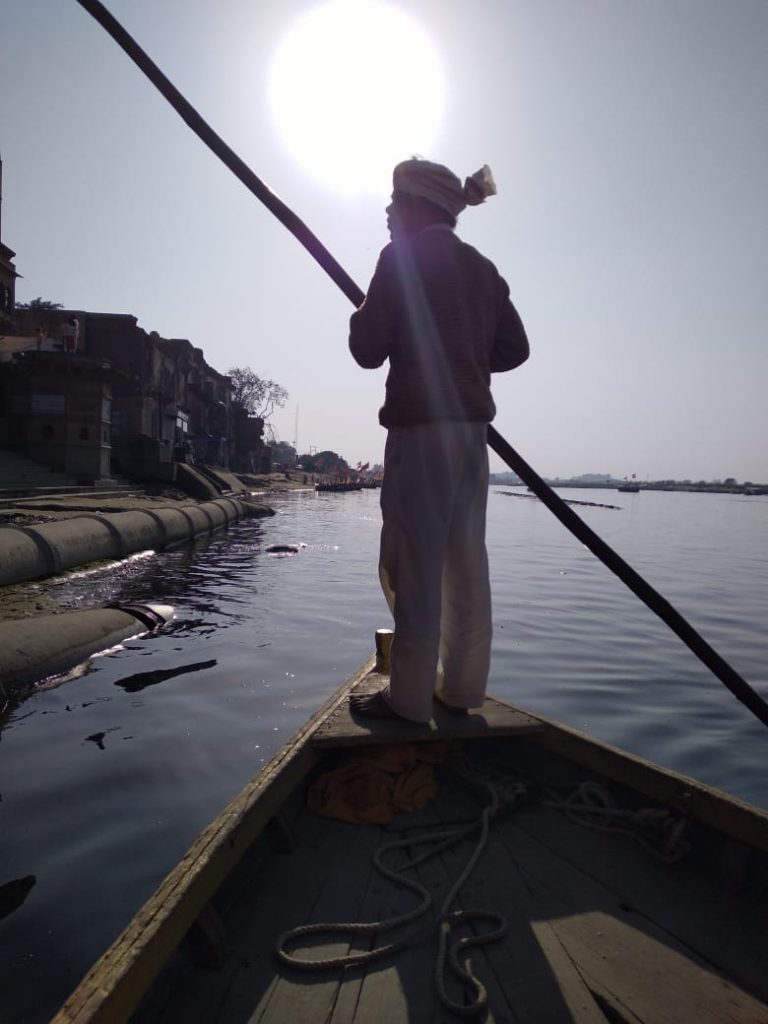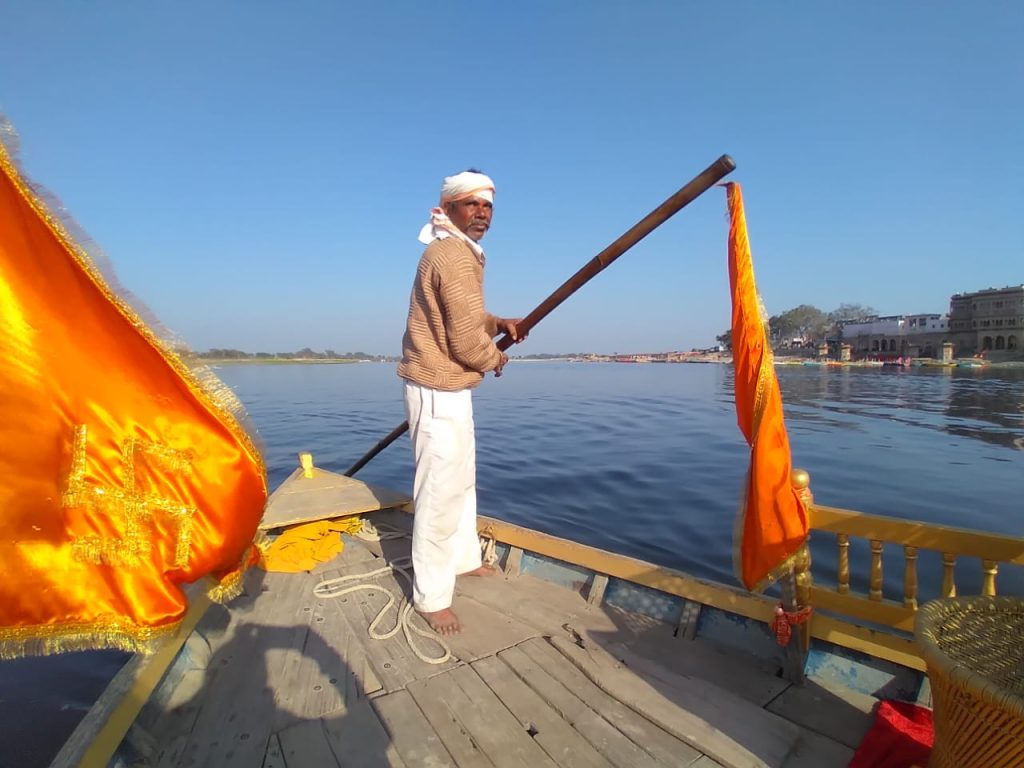Dr. Atreyee Majumder Awarded the Wenner-Gren Foundation Post-PhD Grant for her Ethnographic Research on “Love Among the Ruins: Tracing Melancholia in Vrindavan”
November 17, 2023
We congratulate NLS faculty member Dr. Atreyee Majumder for being awarded the Wenner-Gren Foundation Post-PhD Grant for her ethnographic research in Vrindavan and the surrounding area in Uttar Pradesh for 2024-2025. This grant program funds individual research projects undertaken by doctorates in anthropology or a closely related field. Atreyee’s ongoing research was initiated in 2019 and is titled “Love Among the Ruins: Tracing Melancholia in Vrindavan.” In this interview, Atreyee shares more about her research and her experiences along the way.
Publications cited in the interview below may be viewed here.
Project Statement
“Between the afternoon light, the samadhis of Swami Haridas and his disciples, the widow’s sharp, nasal voice, and the monkeys shrieking from time to time, I am in a dream. This place is not in the world I know. It is not only strange in all its strange ingredients – like an exotic dish; it is strange because I am in it. God descends onto the world in this fleeting, utterly strange moment” – (Majumder 2023).
How does God descend into a sacred geography for the devotee amidst postcolonial urban modernity? To answer this question, I have been conducting preliminary ethnographic research in the town of Vrindavan and its urban surround in northern India – the sacred geography of Krishna worship, popularly called Braj. My research focuses on the devotional tradition – bhakti (Hawley 2007) – specifically related to the Hindu god Krishna (Coleman 2011), as practised by the Vaishnava community.
 What inspired you to take up this research?
What inspired you to take up this research?
My current research has emerged from my personal search for divinity in the Braj region where I first travelled as a devotee, and only later as an ethnographer. My faith was strengthened by my interactions with musicians, priests, and sadhus (ascetics) in Vrindavan, some of whom answered my questions, while some asked me to move on.
I was introduced to the aural universe of Vrindavan through musical performances at temples like the Radha Raman, and later singing along with the temple musical performance at the Bhattji ki Haveli shrine complex. I have some training in Western classical music and have begun taking singing lessons in Hindustani classical music (the genre in which bhajan/kirtan songs are generally sung in north India) from an interlocutor-musician in Vrindavan intermittently, as well as regular lessons in Bangalore.
What are the key questions that the project explores?
The project asks the following questions:
- How does the presence of Krishna make itself palpable in the milieu of modern, urban life in the Braj region?
- How do believers cultivate, embody, (Holdrege 2015) and intuit (Sarbadhikary 2015) the presence of the Godhead in the midst of their everyday struggles of living in a small, postcolonial city that dates back to the 16th century?
- How do devotees negotiate such imagined presence and palpable sensations of the Godhead’s absence in the contemporary life of Braj?
In the Braj region, Krishna is worshipped and loved as a small child and a charming youth who is commemorated and imagined as dancing, singing, making mischief, and as the centre of familial and fraternal attention of, typically, members of the cowherd Yadava community (Hawley 1983; Hawley & Goswami 1981). As a lover, he is imagined with his primary consort Radha or Radhika (Hawley et. al. 1982; Gokhale & Lal 2018).
My research is an inquiry into the nature of the devoted self that discards the ego and seeks to transcend the sorrows and hardships of earthly life while contemplating the world as an embodiment of Krishna. I move beyond current anthropology’s focus on the subject of late capitalism which is engaged in struggling against and negotiating regimes of modern power (Harvey, 1990; Li 2007; Roy 2022; Sharma 2009; Kar 2020). Instead, I focus on the deliberate cultivation of solace and, simultaneously, sadness, that emerge from the active imagination of the Godhead while living simultaneously in the time of late capitalism (Mbembe 2001; Chatterjee 2004; Chatterjee 2011).
My inquiry of the devotional self, moves along three axes: a) the production of the Krishna-in-Braj trope, b) absence of the Godhead expressed as biraha/melancholia, c) cultivation of spatial selves.
Could you take us through your journey and elaborate on the three axes of your research?
Yes, I first went to Vrindavan following my own devotion towards Krishna (Majumder 2022a & b). This project emerged subsequently, with its focus on production of the self through sound as a primary sensory provocation.
 a) Production of the Krishna-in-Braj trope – I began to look for repeated utterances invoking the divine in my visits to Vrindavan (in 2019, 2020 and 2023) and was struck by the repeated utterance of the phrase Radhé Radhé. This utterance began to show up on canvases beyond the aural and oral registers: on faces (the names of the gods stamped in yellow sandalwood paste on cheeks and foreheads), written across signboards of shops, restaurants, rickshaws, and sometimes, simply, on walls. This is a mundane example of repetitive logics that are deployed in everyday speech as well as performance (especially, in music) in the cultivation and intuiting of Krishna’s presence as enchanting the everyday. Krishna and his early life’s story of youthful play and happiness (spent in the Braj region) is narrated everywhere in Vrindavan – in temples, musical performances, rituals, and visual and aural canvases.
a) Production of the Krishna-in-Braj trope – I began to look for repeated utterances invoking the divine in my visits to Vrindavan (in 2019, 2020 and 2023) and was struck by the repeated utterance of the phrase Radhé Radhé. This utterance began to show up on canvases beyond the aural and oral registers: on faces (the names of the gods stamped in yellow sandalwood paste on cheeks and foreheads), written across signboards of shops, restaurants, rickshaws, and sometimes, simply, on walls. This is a mundane example of repetitive logics that are deployed in everyday speech as well as performance (especially, in music) in the cultivation and intuiting of Krishna’s presence as enchanting the everyday. Krishna and his early life’s story of youthful play and happiness (spent in the Braj region) is narrated everywhere in Vrindavan – in temples, musical performances, rituals, and visual and aural canvases.
b) Absence of the Godhead expressed as biraha/melancholia – The second axis that I wish to explore is the palpable sensation of the absence of Krishna who is typically narrated in the Braj region as someone who was once here. This is captured by the Braj/Hindi word biraha (literally, “separation”) – a mood through which I perceive the devotee-God relationship to be practised in the region. Furthermore, biraha is the mood through which Radha’s anxious waiting for Krishna’s return is imagined in the renditions of their love story. I interpret the modern disconnect between the Godhead and the devotee through a secular rendition of the trope of biraha in my research. Krishna seems to have left the geography of Braj where the devotee today appears to live and narrate a constant pain of separation. This perception arises from the observation of sadness and melancholia expressed in lonely corners of crowded temples and shrines where lone devotees express, usually in song, a yearning and a nostalgia for a more enchanted time.
 c) Cultivation of spatial selves – The Braj region, a 500-year-old urban environment, is a sacred space while also, simultaneously, being one of everyday neglect and apathy. These two aspects intersect at Vrindavan and its surroundings. The currency of sacrality is not diluted by hardship.
c) Cultivation of spatial selves – The Braj region, a 500-year-old urban environment, is a sacred space while also, simultaneously, being one of everyday neglect and apathy. These two aspects intersect at Vrindavan and its surroundings. The currency of sacrality is not diluted by hardship.
I will assess the cultivation of the devotional self in spatial terms, through immersion in the urban environment which is dotted with monuments (mostly temples) dating back to the 16th century and interrupted by the growth of new-age temples with shiny exteriors. I will explore dimensions of an ambivalent, consumptive self that fishes out the cellular phone to photograph the deity every time the curtain is removed, and the idol is brought out into one’s visual field.
On other explorations as part of the project:
Investigations into the sign-economy in the urban environment, including on the internet, that signal the amplification of the Radha-Krishna trope, and the uniting of devotees not physically contiguous will also be crucial aspects of my project.
Finally, I will examine the relations of apathy and love for three non-human entities – cows, monkeys, and the polluted and yet sacred river Yamuna. I will use these elements of placemaking as modalities to illuminate the cultivation of a spatial self.
Has this research also influenced you personally in other ways?
I am simultaneously becoming interested in a literary project on 20th century English language translations of bhakti poetry that has come down from various Indian geographies since the eighth century CE, and relatedly, seek to explore the capacity of the English language to articulate the rhetorical and imaginative possibilities of bhakti (see Majumder 2022c).
Are there any other publications that were generated from this research?
I have written about the devotee-ethnographer conundrum in a recent article (Majumder 2022b). Two journalistic pieces (Majumder 2022c; Majumder 2023) and an ethnographic poem have emerged from my journeys to the Braj region (Majumder 2022a).


